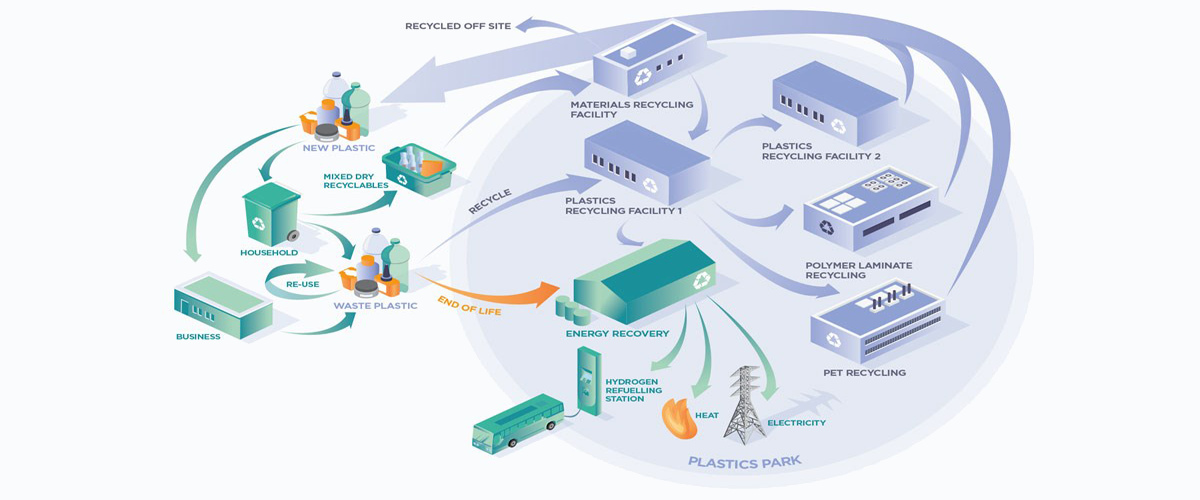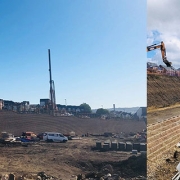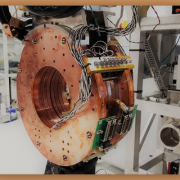Complex public sector sites – such as hospitals, prisons, and military barracks – could achieve a 70% reduction in carbon emissions by 2032 with an average capital cost of £12.6m per site, according to a two-year innovation pilot.
The Modern Energy Partners (MEP) innovation programme was tasked with exploring how to decarbonise the public sector estate, by developing repeatable methods that enable large campus-style sites to meet UK Government commitments on net zero.
MEP was driven and funded by the Department for Business, Energy and Industrial Strategy (BEIS) through the £505 million Energy Innovation, and overseen alongside Cabinet Office, and other estate-owning departments, with Energy Systems Catapult providing programme delivery, analytical and technical support.
The MEP pilot used a test bed of 42 sites responsible for over 294,000 tCO2e carbon emissions – equating to 8% of Ministry of Defence (MOD), 17% of Ministry of Justice (MOJ) and 6% of NHS sites.
MEP found that on average for a campus-style to achieve 70% emissions reduction by 2032 the capital cost was £12.6m per site.
The MEP final report provides independent recommendations for stakeholders involved in public sector decarbonisation for campus or similarly challenging sites:
- Strategic plans to help speed up and scale up action are important: An increase in the pace and scale of decarbonisation across the public sector estate is urgently needed to reach targets. Agreed-upon, organisation-wide and long-term decarbonisation strategies can help simplify processes and cut timelines. More broadly, a public sector-wide reporting framework alongside appropriate carbon valuation will incentivise action.
- Tailored plans at site level are vital: A tailored and detailed approach is needed for each site. The design stage should consider all aspects of Departmental and site-level governance as well as the appetite for investment in low carbon technology. Working with multiple consultancies in the development of individual design plans can increase idea sharing and avoid technology bias.
- Delivery capability must be considered: Appropriate resourcing, capacity-building and prioritisation is urgently needed. This includes the capacity building of roles focussed on coordinating the planning and delivery of decarbonisation strategies into existing asset life replacement programmes on site. Important responsibilities of this role will be to select the technology appropriate delivery route and ensure sign-off and access are obtained in a timely manner.
The programme focused on “learning by doing”, MEP tested out the practicalities of scalable decarbonisation through three primary activities:
1. Tested rapid deployment of data gathering technologies and analysis techniques to appraise future net zero progress across 36 of the 42 testbed sites.
2. Developed a systematic and repeatable appraisal approach for the decarbonisation of campus-style public sector sites at 24 of the sites, showing estate-wide programmed deployment can be planned.
3. Worked intensively with four “pathfinder” sites to test out different commercial deployment routes, seeking quality and value for money:
- Sheppey Prison Cluster
- HMS Collingwood
- NHS Goole and District Hospital
- Catterick Garrison
Energy Systems Catapult chief executive, Philip New, said: “The public sector only accounts for around 2% of total UK emissions. But by both reducing its own emissions and demonstrating an ambitious, systematic and scalable programme of work, it offers an opportunity to demonstrate that it is possible to decarbonise at scale. The potential to procure at scale is likely to drive value for money for the public purse, encourage innovation, support skills building, help levelling up across the country and push technology prices down benefiting the wider economy.
“The Modern Energy Partners programme demonstrated that it was possible to put individual sites on track to hit net zero targets through a sustained effort by people with a mix of skill-sets.
“While some action has already being taken towards reducing emissions within the public sector estate, MEP experienced multiple barriers to delivery which must be overcome to deliver decarbonisation at scale.
“Firstly, each Government department needs a deliverable net zero strategy, which captures the scale and pace required to meet national net zero commitments.
“Secondly, the cost of decarbonisation is a key barrier. To make decarbonisation scalable, funding must be available and deployed efficiently within a department.
“Thirdly, MEP found that capability was limited to centrally based sustainability teams and, rather than embedded throughout departmental estate management. Under current conditions, delivery that relies on these small central teams is time-consuming and not scalable.
“Finally, we found that in the future decarbonisation of campus-style sites, like prisons, military bases and hospitals could be possible and could be delivered at the scale and pace required, however it needed to follow a systematic, repeatable and scalable approach.”














